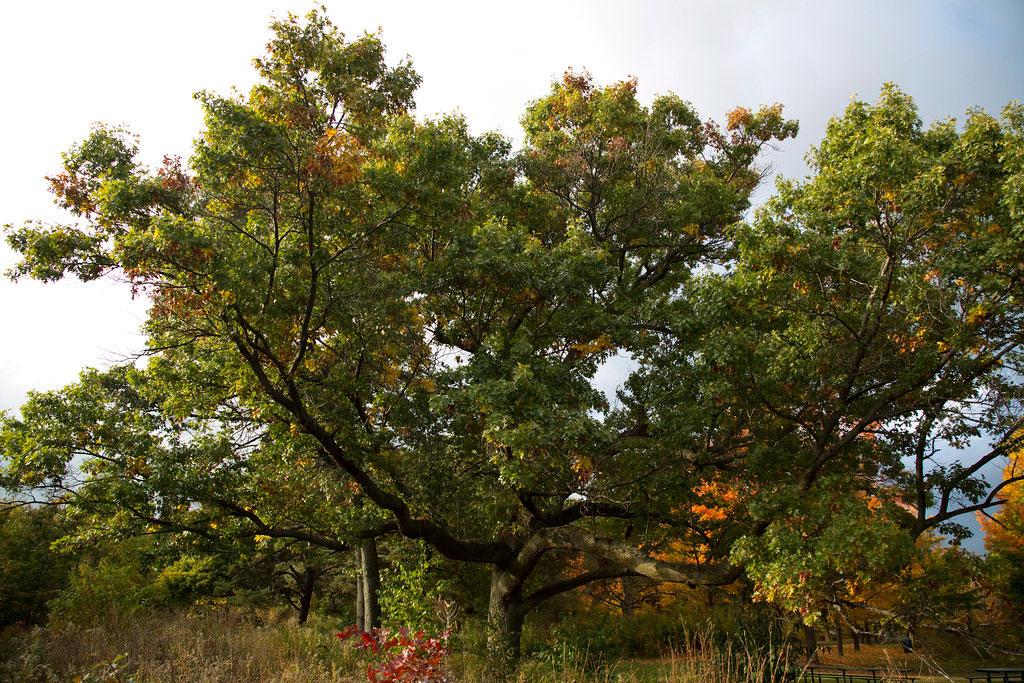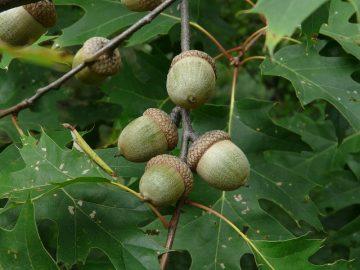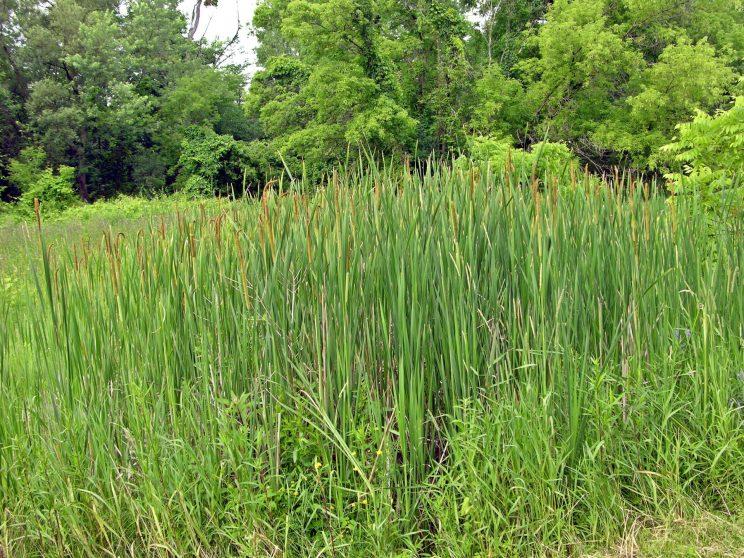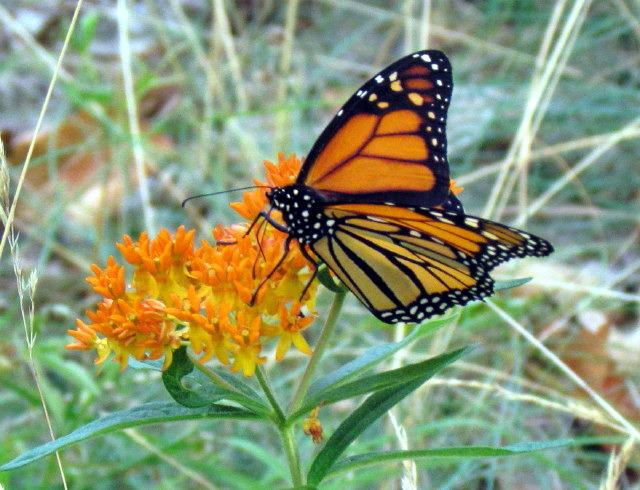based on an article by David Orsini
While many species of deciduous and coniferous trees grow here, High Park has always been known for its magnificent, wide-branched oaks.
Oaks are a much-revered group of trees, valued by the Druids as places of worship, by military strategists of yesteryear for shipbuilding, and by carpenters throughout the ages for the strength and trueness of the wood. Oaks have also been found to harbour the greatest diversity of insects of any trees in our part of the world.
Three species of oak – Black Oak, Red Oak and White Oak – are indigenous to High Park. The average life expectancy of the Black Oak is 150-200 years, less than the Red Oak which is 250-300 years, and White Oak which is 500 or more.
The Black Oak Savannah
The oaks of High Park are well-adapted to the dry and nutrient-deficient soils of the park. These sandy soils were laid by Lake Ontario’s prehistoric predecessor Lake Iroquois which covered the park 12,000 years ago.
The sandy soils of High Park's central upland plains have led to the evolution of the present-day savannah. Tree species naturally occurring in savannah areas are deep-rooted to maximize moisture intake and have thick bark to protect them from fire. Savannas occur throughout the world and contain many different tree species. In the savannah areas of High Park the predominant tree is the Black Oak.
Black Oak (Quercus velutina)
In the savannah areas of High Park the predominant tree is the Black Oak. This medium-sized tree likes to grow on the dry uplands and at the top of ridges in well-drained sandy soil. Black oaks grow to 50-80ft or 15-24m and have an open spreading crown.
Black Oak leaves are elliptical with 7-9 lobes which are either shallow or deep and narrow ending in a few bristle-tipped teeth. The leaves are yellow-green with brown hairs below and shiny green on top and in the fall they turn a brown or a dull red.
The bark is dark gray on the outside and the inner bark is yellow or orange. The inner bark used to be a source of medicine, tannin and yellow dye for cloth.
The Black Oak was once called the Yellow-bark Oak for its inner bark is a bright orange-yellow. This layer of bark can be used fresh or dried and pounded to a powder to produce a yellow dye.
The scientific name of the Black Oak "velutina" derives from the velvety surface of the shoot, leaf, and leafstalk. The fuzz on the upper side of the leaf falls off, leaving it stiff and parchment-like. This leaf-coating helps to minimize moisture loss through transpiration.
Northern Red Oak (Quercus rubra)
Red Oaks prefer the moister slopes of ravines but can also be found on the tablelands. This large tree can grow to 25m or more in height and have a trunk up to 120cm or more in diameter at maturity.
Red Oak leaves also have pointed lobes but they are not as deeply cut as Black Oak, and are smooth below rather than hairy. The leaves turn bronze or red in the fall.
Red Oak acorns are much larger than Black Oak, protruding more from their cap. Learn more about acorns in High Park.
White Oak (Quercus alba)
This oak grows slowly but for a long time, as much as 500 years or more!
White Oak's preferred habitat is not as dry as Black Oak and not as moist as Red Oak. It grows 18 to 30m high, with a trunk diameter of 60 to 120cm. White Oaks have round-lobed leaves and light grey bark.
Oak Decline Study and Monitoring
In June 2002, City of Toronto's Forest Health Care inspectors started monitoring the mature oak trees in High Park after observing an alarming decline of mature oak health. It was determined during this initial monitoring initiative that the decline of these oaks was not caused by a single factor and demonstrated signs and symptoms typical to Oak Decline.
Oak decline is a syndrome that affects older or mature oak trees. It is triggered by the interaction of multiple stressors which weakens the trees over time.
Since the monitoring initiative, the oaks in High Park have been observed annually by Forest Health Care inspectors to monitor their health status and the rate of decline.
Recent observations are showing a continued trend of steady decline happening with the mature oaks in High Park. This is likely explained by the defoliation from Fall Cankerworm a few seasons ago, coupled with defoliation caused by LDD moth in recent years. The Two-lined Chestnut Borer (Agrilus bilineatus) is another main contributor to oak decline following defoliation. Many oaks struggle to recover the energy lost after heavy defoliation and become stressed. Once trees are weakened, they are prone to Armillaria root rot, a fungus found under the soil that waits for opportunities to infect weakened trees.
Since the awareness of this decline, and the recognition of the mature age class of the oak trees in High Park, initiatives to increase the young oak population were implemented. As a result of these initiatives, including a prescribed burn program, there has been an observed increase in natural oak regeneration. Young oaks have also been grown from locally collected acorns and re-planted back to High Park's natural areas by City Staff. The mature oaks in High Park will continue to be monitored.























